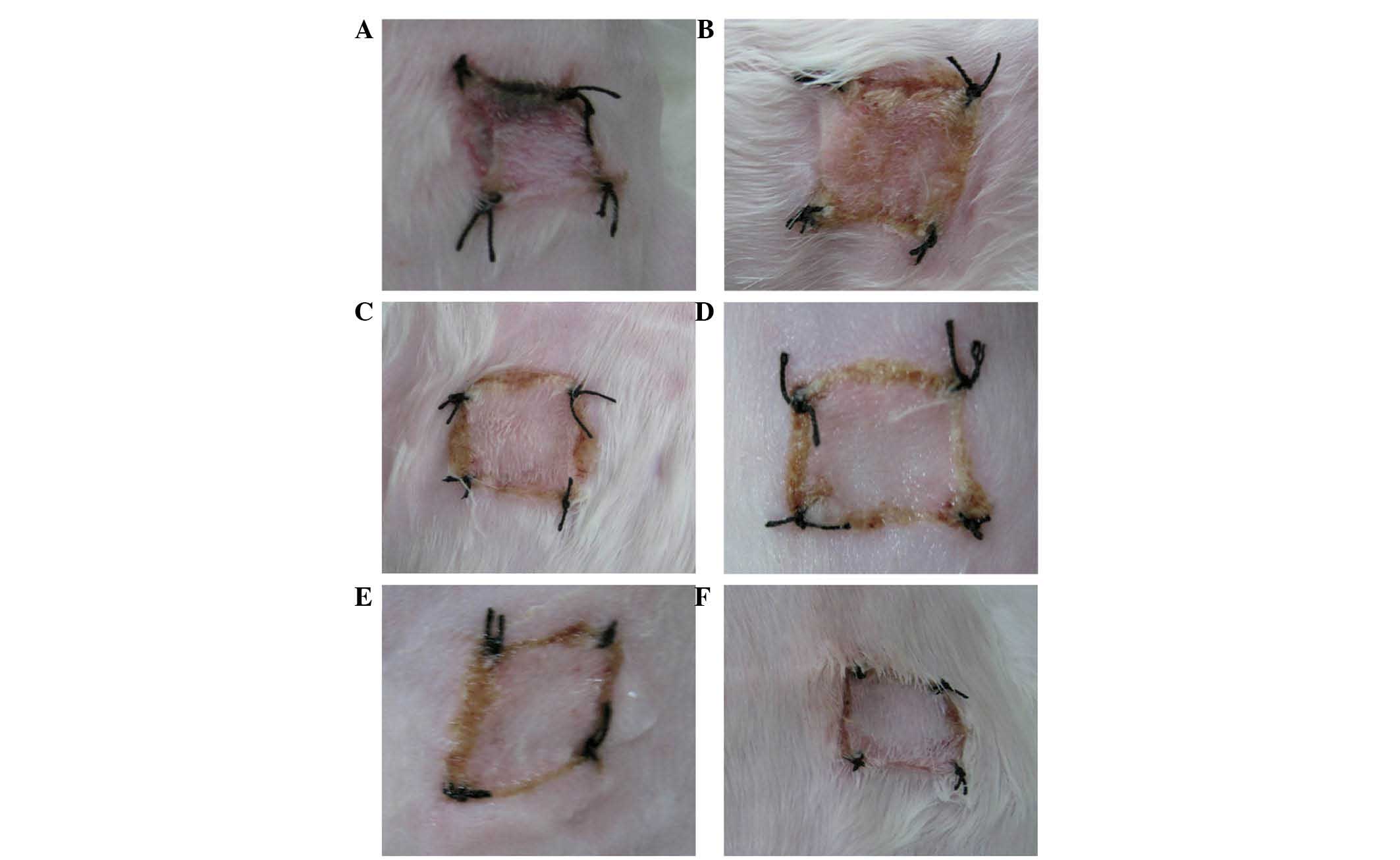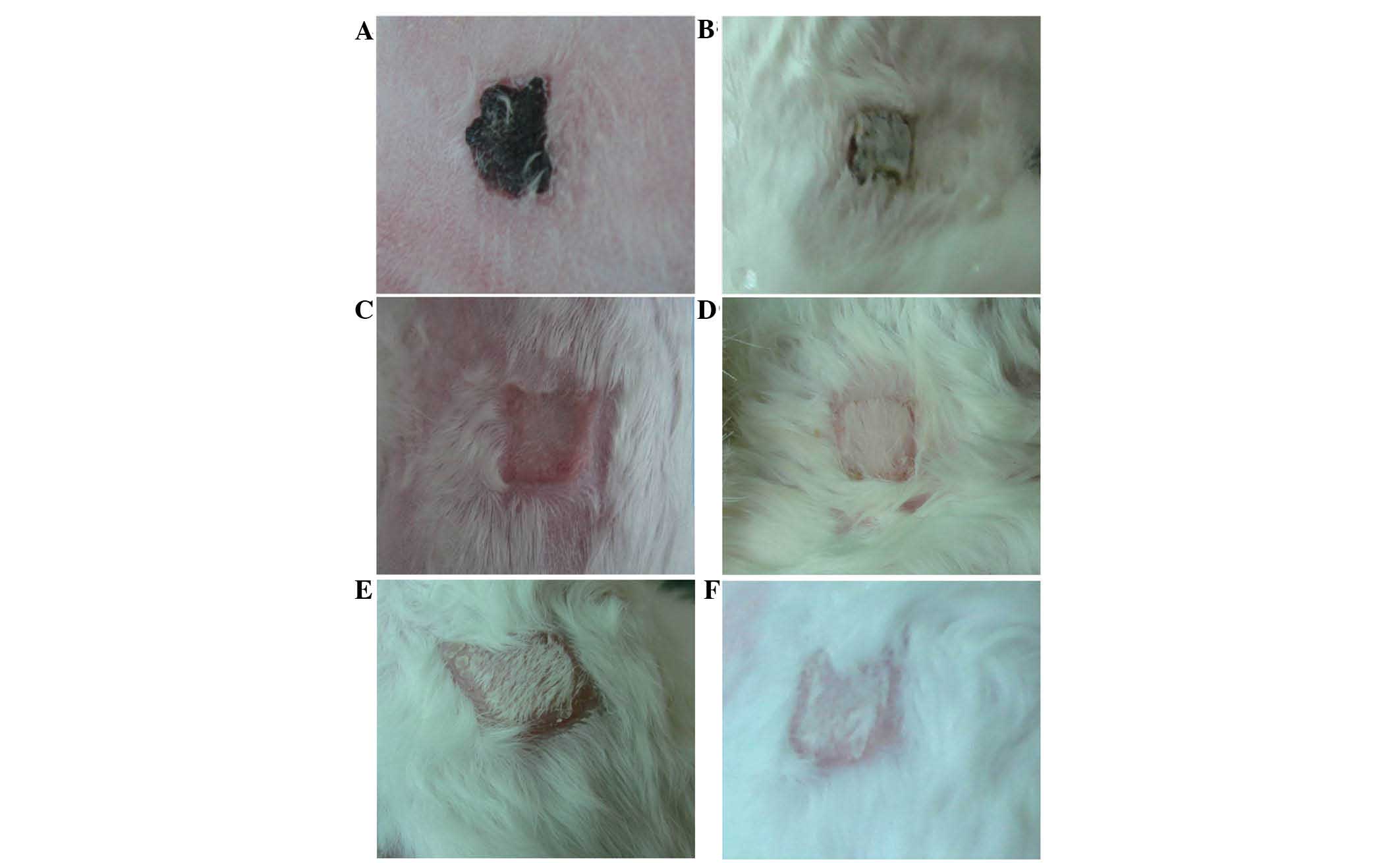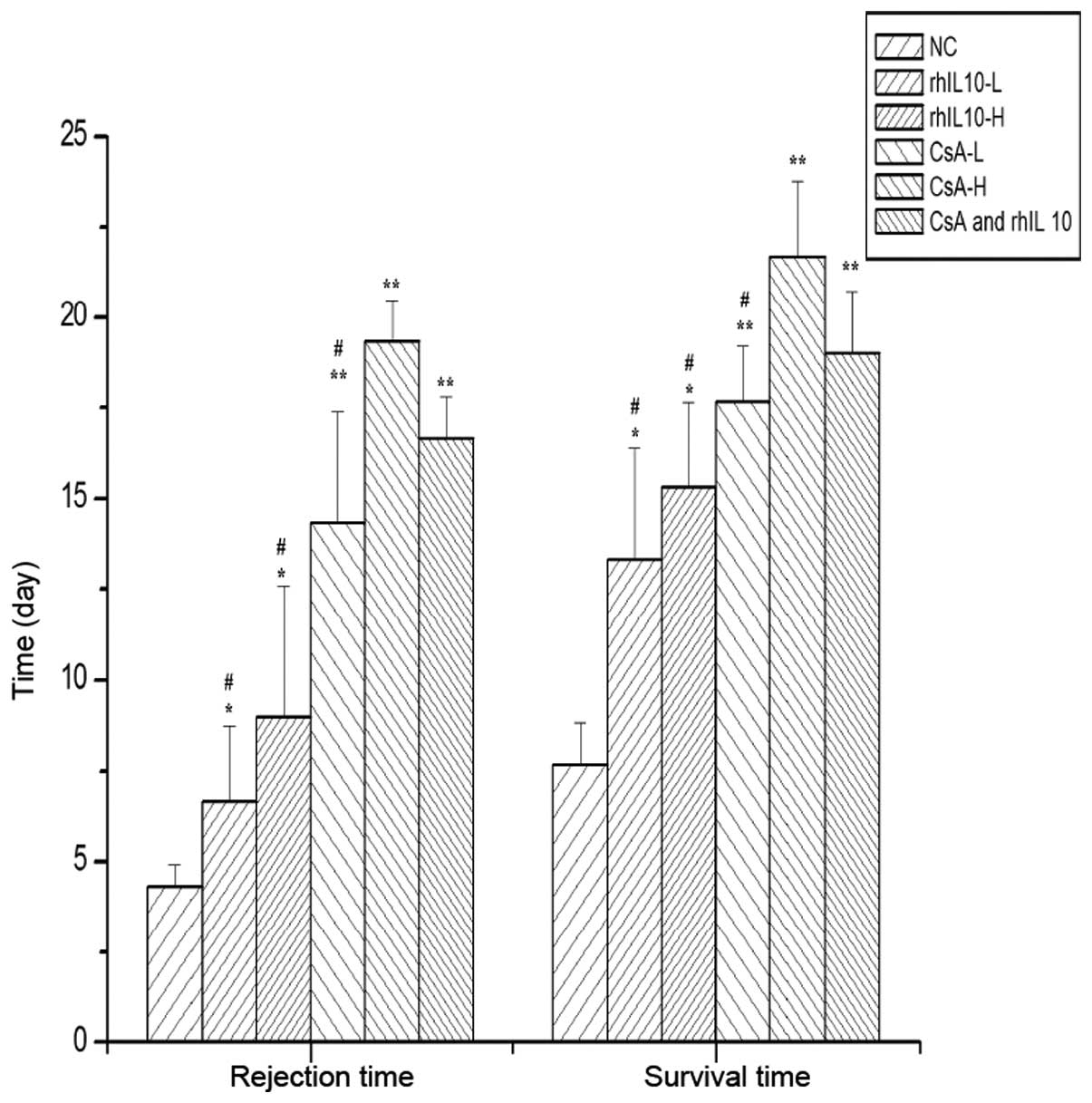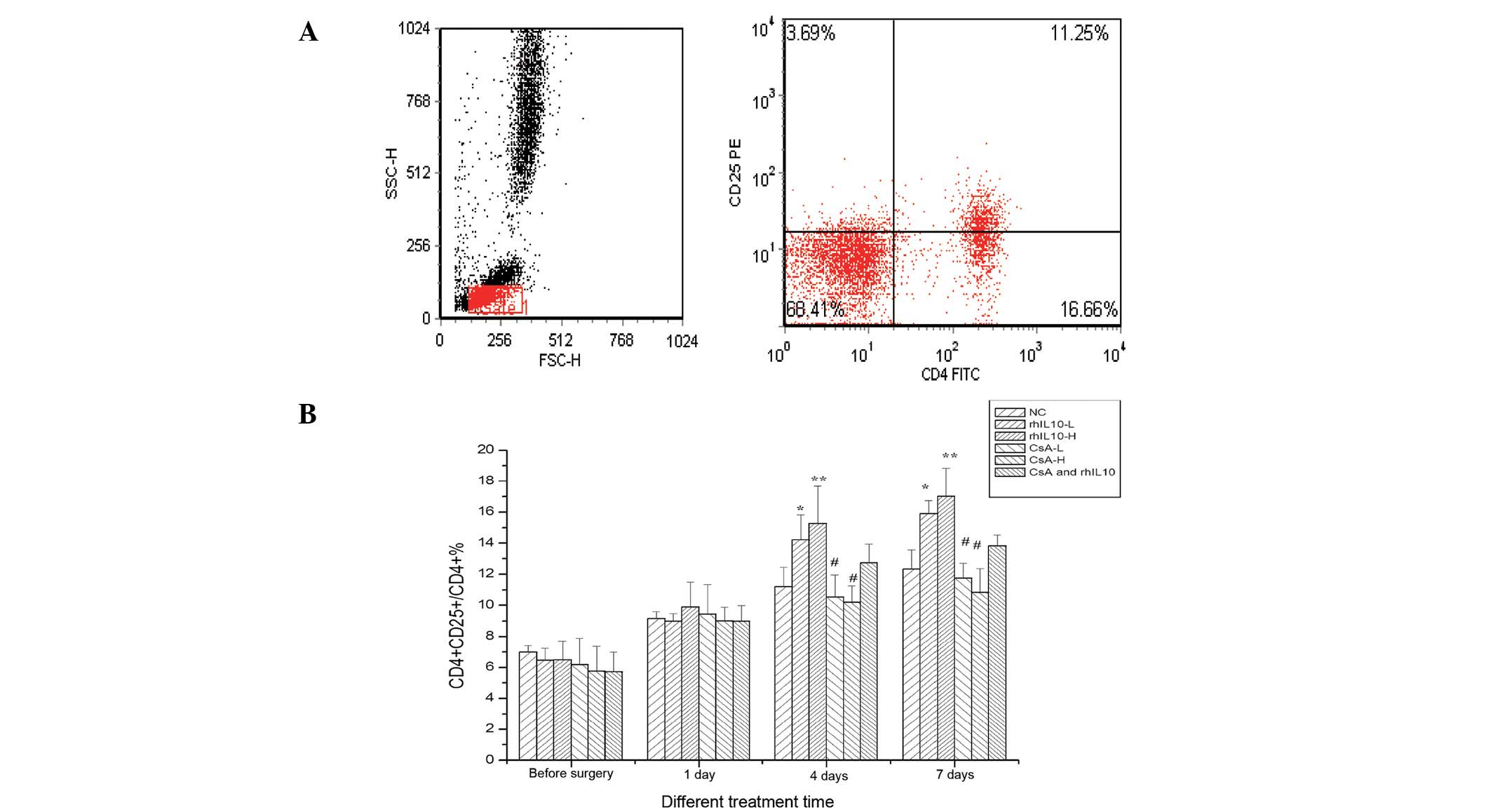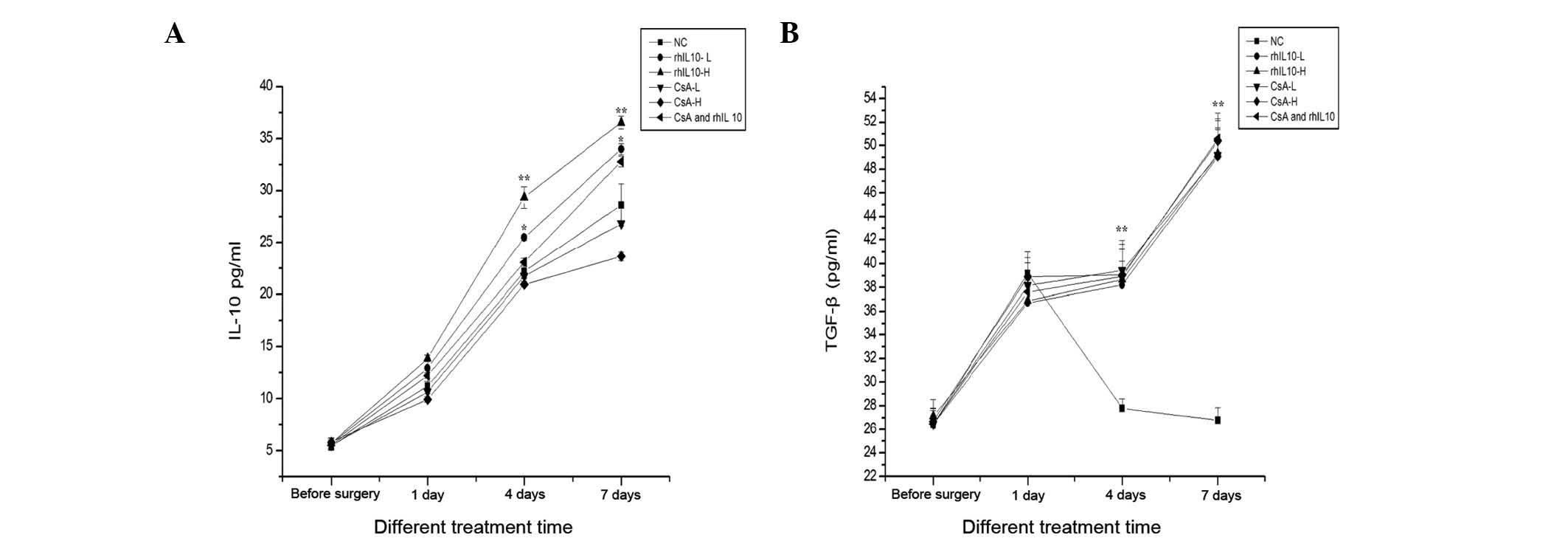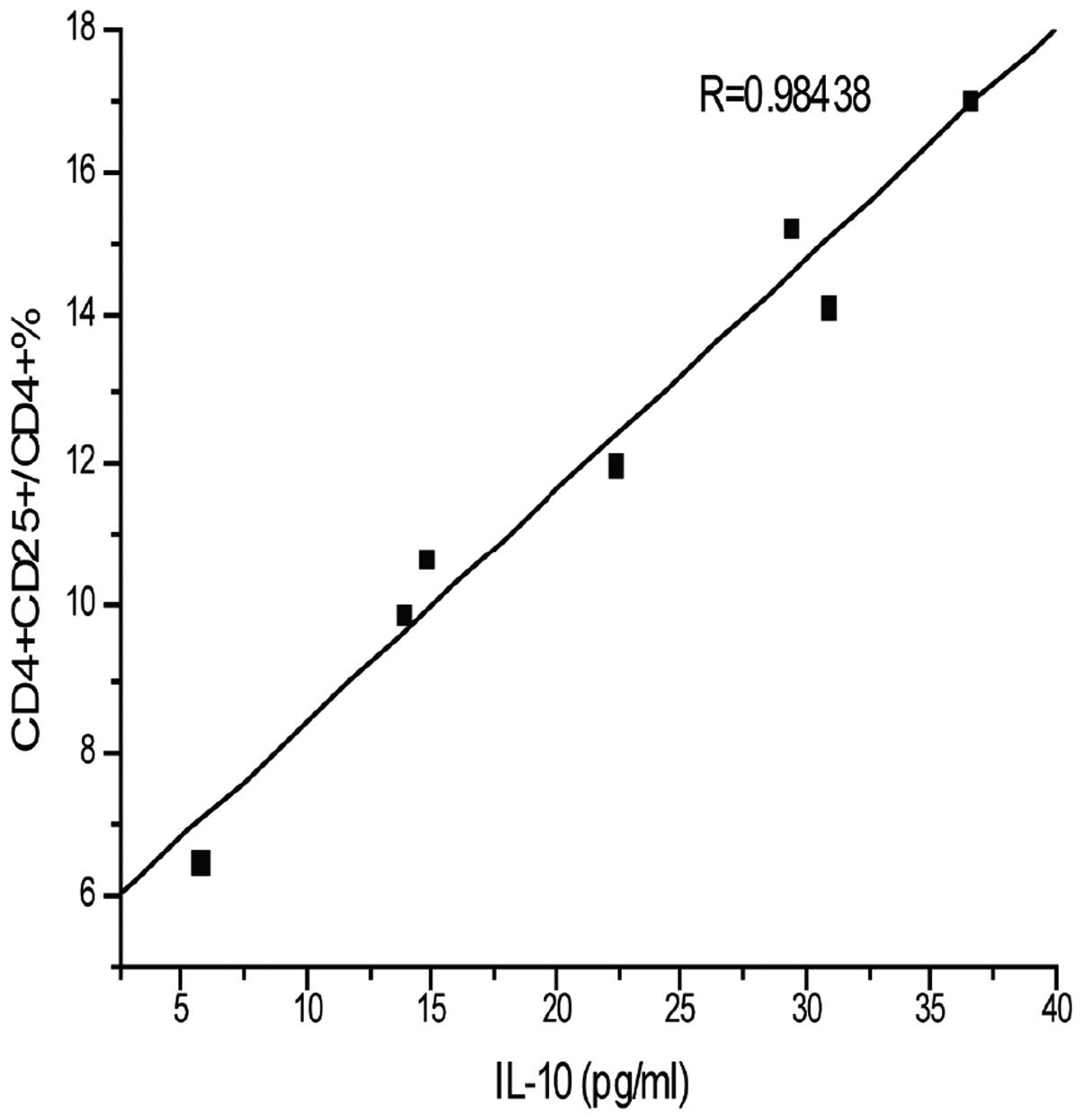Effects of recombinant human interleukin‑10 on Treg cells, IL‑10 and TGF‑β in transplantation of rabbit skin
- Authors:
- Published online on: November 20, 2013 https://doi.org/10.3892/mmr.2013.1817
- Pages: 639-644
-
Copyright: © Liu et al. This is an open access article distributed under the terms of Creative Commons Attribution License [CC BY_NC 3.0].
Metrics: Total
Views: 0 (Spandidos Publications: | PMC Statistics: )
Total PDF Downloads: 0 (Spandidos Publications: | PMC Statistics: )
Abstract
The current study aimed to investigate the rejection and survival time of grafted skin, and the changes of Treg cells, interleukin 10 (IL‑10) and transforming growth factor‑β (TGF‑β) in peripheral blood following skin transplantation with recombinant human interleukin‑10 (rhIL‑10) or cyclosporin A (CsA), as well as the role of IL‑10 in immunological rejection mechanisms. A total of 36 rabbits were divided into two groups. The skin of a donor rabbit was transplanted onto the back of one receptor rabbit. Receptors were randomly divided into six groups, including rhIL‑10 low‑dose (5 µg/kg/d), rhIL‑10 high‑dose (10 µg/kg/d), CsA low‑dose (5 mg/kg/d), CsA high‑dose (10 mg/kg/d), rhIL‑10 (5 µg/kg/d) and CsA (5 mg/kg/d) and negative control normal saline (NS; 1 ml/d). All groups received intramuscular drug injection for ten days, beginning one day prior to skin transplantation surgery. Following transplantation, each rabbit's peripheral blood was collected at different times. The changes of CD4+CD25+ regulatory T cells, IL‑10 and TGF‑β were determined by flow cytometry and enzyme‑linked immunosorbent assay. When compared with the control group, the rejection and survival times of the experimental groups were longer following skin graft. Compared with the two CsA groups and the control group, the proportion of CD4+CD25+ regulatory T cells of rhIL‑10 groups was significantly upregulated on the 4th and 7th days following surgery. However, TGF‑β levels were not significantly different. Data suggested that the concentration of IL‑10 was positively correlated with the proportion of CD4+CD25+ regulatory T cells. In addition, IL‑10 may delay the rejection time of rabbit skin transplantation and prolong the survival time. Thus, the role of IL‑10 in inhibited allograft rejection may be associated with CD4+CD25+ regulatory T cells and IL‑10, and may be independent of TGF‑β.



